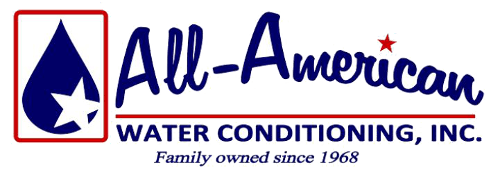WATER SYSTEM FAQS AND SURROUNDING AREAS
Q: How hard is my water?
A: The level of hardness is based upon the amount of dissolved minerals, specifically calcium and magnesium. Water hardness is usually measured in Grains per Gallon or Parts per Million (1 GPG = 17.1 ppm). In North Florida, hardness levels are typically above 10 GPG and in many cases, levels are much higher. The standards set by the National Water Quality Association state that water over 10 GPG is considered extremely hard.
Q: What kind of damage can hard water do to my home?
A: Water hardness scale builds up on household fixtures, appliances, plumbing, and especially in your hot water heater. You can see the buildup on your glasses and dishes every time you use your dishwasher or kitchen sink. Scale will build up quickly in dishwashers and ice makers. Continuous laundering in hard water can damage fibers and shorten the life of your clothing by up to 40%. The hard water will damage and shorten the life of everything with which it comes into contact.
Q: How can I tell how hard my water is?
A: We can send out a representative and test your water at no charge!
Q: What is the difference between a water softener, a water filter, and a water conditioner?
A: A water softener and conditioner are water treatment systems designed to remove hardness minerals like calcium and magnesium carbonate dissolved in your water by using either sodium chloride or potassium chloride. A water filtration system (reverse osmosis) will remove or significantly reduce chemicals like chlorine, pesticides, bacteria, and suspended particles like sand and sediment. A water filter will not remove dissolved solids (hard water.)
Q: Why would I want to soften my water?
A: Softened water greatly reduces scaling and buildup on pipes, faucets, pots, glasses, tubs, etc. You will also use less laundry soap, dishwashing soap, hand soap, etc. Also, most appliances that use water will last longer under soft water conditions.
Q: Why does softened water feel silky?
A: When you wash your skin with hard water, there is a layer of soap and minerals left on your skin. This is what causes the "squeaky clean" feeling. With soft water, all the soap is completely rinsed away leaving just the natural oils that your skin produces.
Q: Do I have to use salt?
A: No. There are alternatives to sodium exchange that produce the same effect. The best salt substitute is potassium chloride. This is just as effective as regular salt, but adds potassium instead of sodium. The only downside to potassium chloride is that it typically will cost 3-4 times more than regular softener salt.
Q: Will a reverse osmosis system remove sodium from softened water?
A: Our state-of-the-art Reverse Osmosis systems will remove about 99.9% of all minerals from water.
Q: What should I look for in a water softener?
A: One of the main features you should
look for is capacity (measured in grains) and how it determines when to
regenerate. Our units vary in size from a 20,000 - 300,000 grain capacity and
meters how much water has been used, to determine when it should regenerate.
Some of our units regenerate under a fixed period of time and others will
regenerate based on your actual water usage. We recommend a water softener that
regenerates on demand.
Q: Why do you recommend a two tank system over a one tank system?
A: Salt water inside the brine tank is corrosive. If you live by the beach and have a car, you see this all the time. On a one-tank system, the controls are very close to the salts. All-American Water feels that it is better to keep the electronics away from the corrosive effects of the salt. Also, salt tanks need to be cleaned out every few years and a one-tank system would have to be uninstalled in order to be cleaned.
Q: How do I put my unit into "bypass" mode and when would I use one?
A: On almost all water softeners, there
is a bypass valve near the back of the unit where the plumbing attaches to the
system. This is usually used when there is an issue with the water treatment
system and you need to stop the water from going to the system but keep the
water on in the home. Most units tell you which way to turn or push the valve
to put the unit into bypass. Sometimes when water treatment systems are
installed it is possible that some of the water from hose faucets around the
home becomes treated. In this case, you could bypass the system to get
untreated water to a faucet that would otherwise become treated water.

